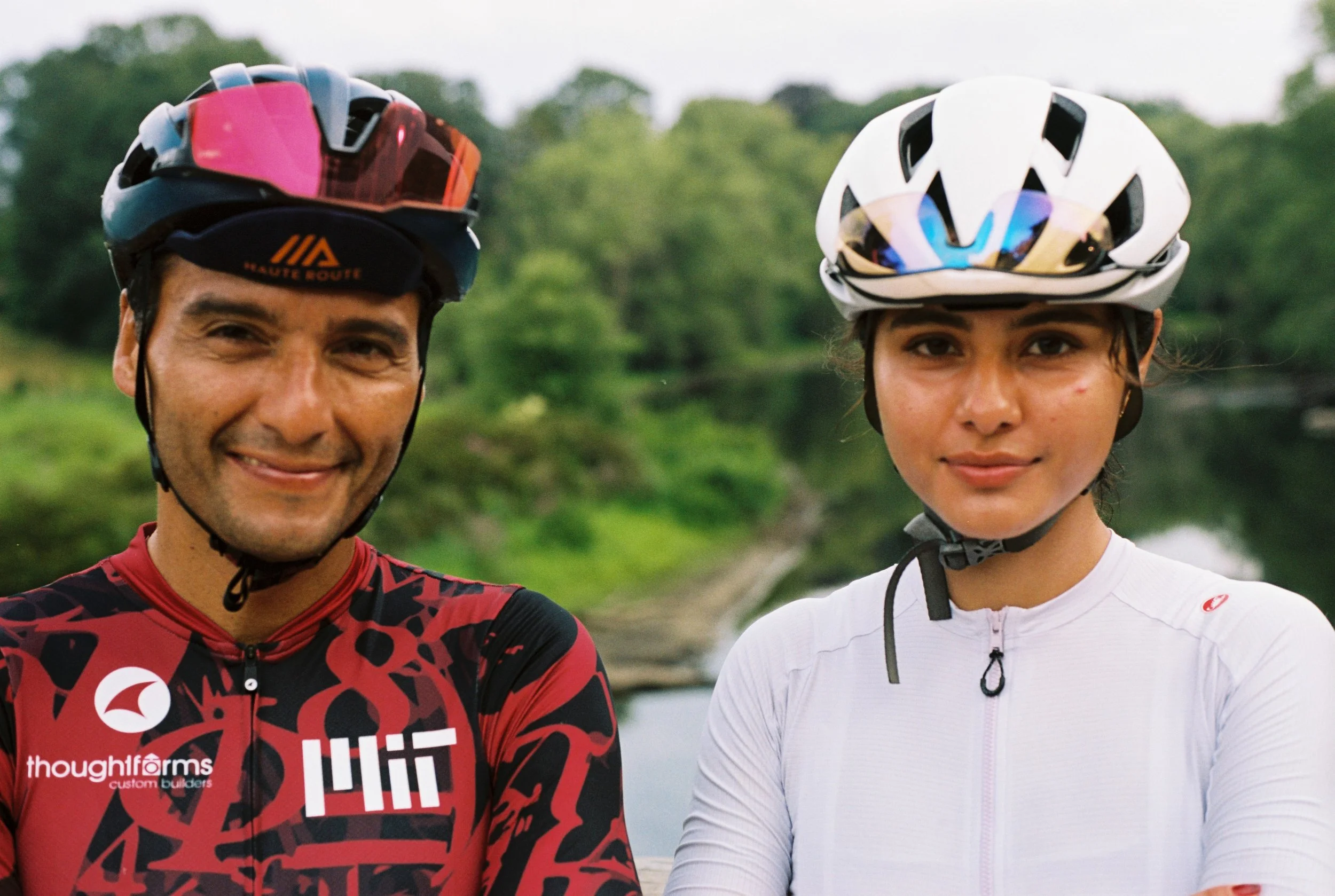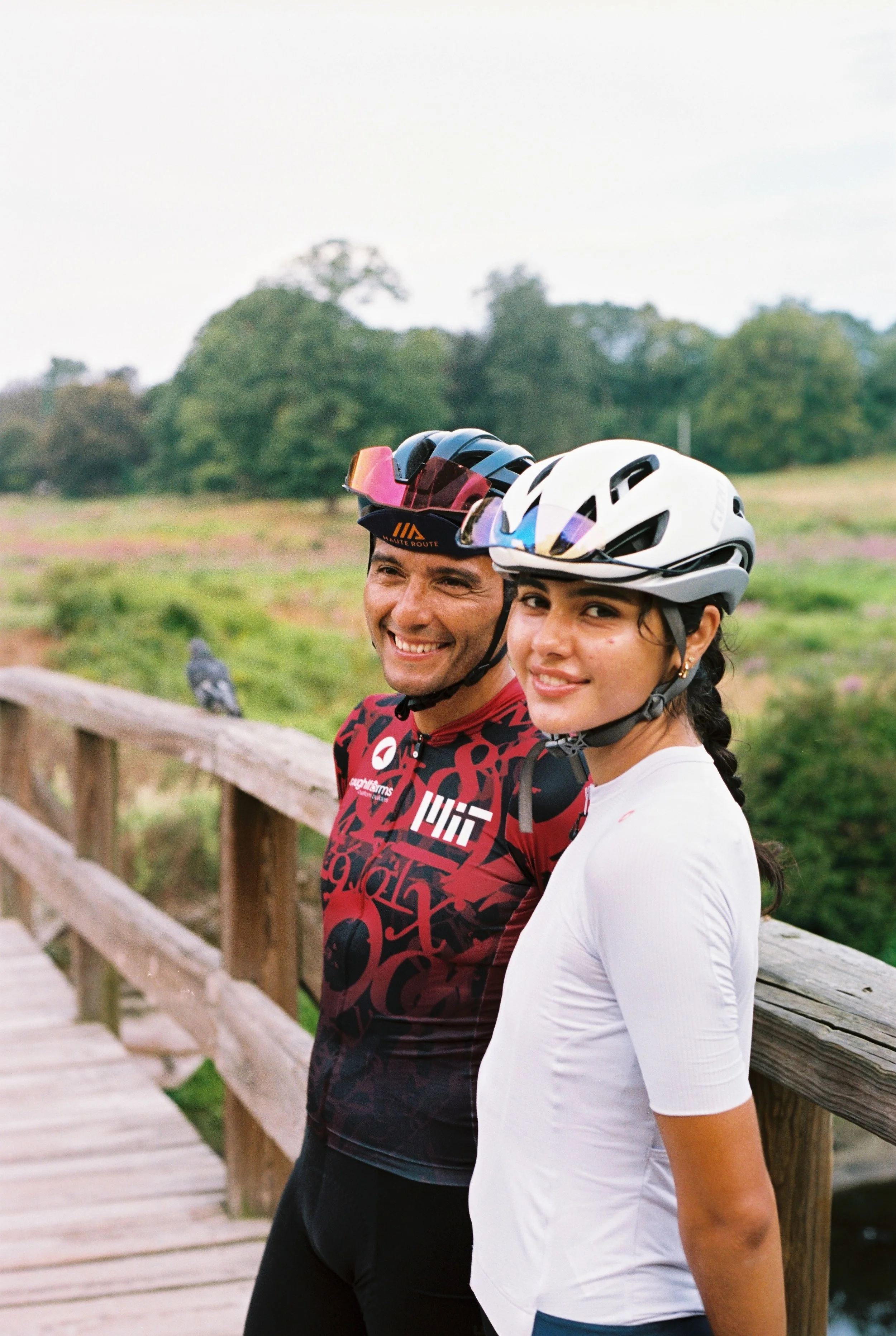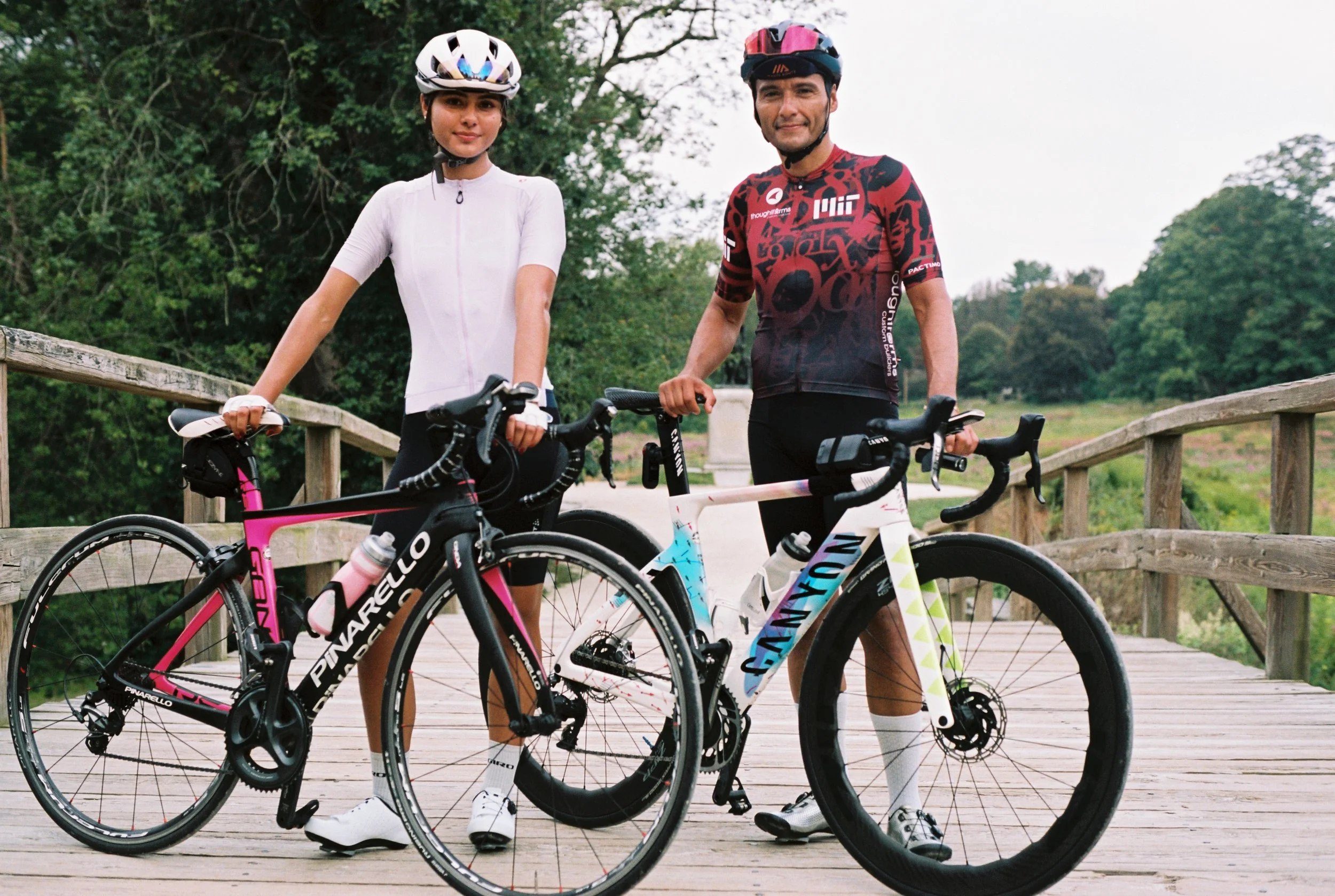Light | Paulo Lozano
On love, loss and hope
On the fourth day of the fourth month of 2024, I woke up to a new day in what had been, up to that point, a wonderful life. Motion defines me, and my passion for cycling has become my preferred mode of experiencing that motion. Not just the kinetic motion of my body—but also of my mind.
The weather that Thursday—the fourth day of the week—was nasty, though not unusual for a New England winter. The roads were coated in a mixture of snow and ice: the worst combination for road cycling. Oh well. I couldn’t take my sleek carbon fiber bike for a morning spin. Instead, I pedaled at home on my turbo trainer, burning a few calories—perhaps to keep my training up, or maybe just for an excuse to upload an activity to Strava.
That morning, my life felt as close to perfection as I could ever wish for. My beautiful family was well, healthy, and happy. My faculty job at MIT gave me the intellectual fuel to power my need to invent and to teach. Every morning, I rode my commuter e-bike to work. I didn’t worry about rush hour gridlock—I would swiftly arrive at the office, often after an early training ride on my carbon bike through the scenic suburbs west of Boston. At 53, I felt I still had so much life ahead—some of my most fulfilling days, even. All was good.
Then, later that morning, I received a phone call. I didn’t recognize the number, so I let it go to voicemail. I listened a minute or two later. It was my wife’s boss, asking me to call back immediately. An electric chill ran down my spine. This couldn’t be good. It wasn’t normal. I called her back. Her words were dry and precise, perhaps trying to be as non-emotional as possible. Still, I couldn’t but notice the slight trembling of her voice. While her words assured me that she didn’t have any information of my wife’s condition, that small perturbation in the air waves told me everything I needed to know. It was serious, it was final. Indeed, without knowing, she delivered the news that the end of the world, my personal apocalypse, had arrived.
It’s been about a year and a half since that day of fours. It feels like much longer—an eternity. Losing Marce, my beloved wife, without warning, without the chance to say goodbye, abruptly transposed my life from a world of perfection into one of darkness and despair. We had been married for almost 30 years, and my darkest fear was unfolding before me on that cold morning.
For millennia, great thinkers, poets, and writers have tried to describe suffering and loss. A humble engineer and amateur cyclist won’t add anything new to that tradition. All I can say is that falling from perfection is a long fall—and the impact is traumatic, transforming the energy of joy into the entropy of hopelessness.
After many months of reflection, I can finally write about it. I can try to move again, and summon the courage to admit that the only motion I wished for in those early days was the one that would let me follow my beautiful wife into nothingness.
A carbon fiber frame, the roads of Massachusetts, and the support of my family and cyclist friends saved my life—in every possible way. Not even 48 hours after that traumatic morning, I was back in the saddle, pushing watts and shifting gears, moving swiftly along the rolling hills of familiar roads. It wasn’t like before. My mind wandered, disoriented, in pain. My tears—partially hidden behind cycling shades—often rolled down my cheeks, drying quickly in the wind.
I was not alone. I was riding with my brother Juan and my friends Jordan, Ruben, and Jay. No matter what I do or write, I will never be able to fully express how much this grupetto means to me. Following their wheels was the only thing I could manage—riding in the darkness.
The pain was there. So was the suffering, and the hopelessness. But my legs could quietly distance themselves from my thoughts and push me forward—nearly every day, for many months. Each day a little farther, a little faster. I now call it therapy—my own way of coping with loss and pain.
Eventually, the thoughts of nothingness began to subside. I came to see them as the lactic acid of my soul. And just like physical lactic acid, it can be cleared—so long as training has structure, and is followed by rest and recovery. The bonus: with progress, the body delays its onset and expedites its removal. In a similar way, my soul has been healing. Mobility—the very act that builds physical strength—also gives me hope.
I grew up in Mexico City—a wonderful place, where you can find almost anything you need and want. I met Marce right there, in that impossibly large city. We were practically neighbors, but still needed to get around mostly by car. There were very few bicycles on the roads, I guess because riding was not particularly encouraged and there was a high probability of not making it in one piece if you ventured to ride on two wheels. Traffic was so dense that you’d sometimes wish you could step out and just walk.
Wouldn’t it be wonderful to have the infrastructure to facilitate human-powered mobility? I’ve been heartened to see some roads in Mexico City finally modified to include bike lanes. You still can’t cross the city by bike—but at least in places like Roma and Condesa, neighborhoods full of history and arguably some of the best gastronomy in the Americas, you now see people riding.
Marce and I moved to Cambridge about 30 years ago for graduate school. I earned my PhD at MIT, and she got her master’s at Boston University. It was a transition—not just of place, but into a multicultural mosaic that was fascinating to experience. People say the Boston area is busy and challenging to navigate, but compared to Mexico City, it felt like a small town. We could walk almost everywhere—or better yet, ride a bike. After all the hectic driving we had done, it was liberating to not have a car. Sure, we’d need one once in a while—for out-of-town trips or hauling heavy loads—but we’d rent or borrow one for short periods.
In recent years, Boston and many other major cities have embraced a shift toward human-powered transportation, sometimes assisted by the rapid evolution of battery technology. That shift has made it easier for someone like me to rely almost entirely on bicycles to get around.
It’s been deeply invigorating to discover just how far bikes can take you—how much they give, how profoundly they benefit your body and mind with every pedal stroke. The challenge of going farther and faster becomes addictive. I haven’t been road cycling all my life. Until 2018, my preferred sport was running. I ran for fun, for fitness, and as my commute most weekdays. My brother, already a cyclist, kept urging me to try it. I finally bought a road bike in early 2018.
I started slow. I fell often while learning to clip in. The fashion of my cycling kit was questionable at best. But in time, I grew passionate—and began to realize just how impactful these machines could be.
After everything I’ve gone through, a new clarity of mind has allowed me to see deep connections between all things that give my life meaning. Marce taught me so many things. Her wisdom always pointed me in the right direction: it has been that same wisdom and love that helps me navigate the oceans of my new life.
One of the greatest lessons Marce taught me is this: never wait for the “right” time to enjoy the world or explore what your body can do. I put that into practice in several European cycling events, riding four editions of the Haute Route in the Alps and Pyrenees. But most importantly, I got to spend my last summer together with Marce in France, in 2023.
Earlier that year, I had begun a sabbatical in Dresden, Germany. Riding along the Elbe River, stopping at pastry shops and the occasional biergarten, I felt like the luckiest man alive. That joy only deepened when we reached Aix-en-Provence, where Marce and I began a month-long travel adventure. I rode from town to town, exploring the roads in between. We visited Cassis, St. Tropez, Toulon, Avignon, Mount Ventoux, Valence, Aix-les-Bains, Annecy, and finally Megève—where I began the five-stage Haute Route. There was nothing more beautiful than seeing Marce in the crowd when I crossed the finish line in Nice.
Those were some of the happiest days of my life. And I have a small, light carbon bike to thank for making them possible—carrying me across thousands of miles and into places I could never have otherwise reached.
Perhaps half the miles I’ve ridden in recent months have been solo. The early morning roads of New England offer the quiet I need to reflect—on what I’ve lost, and what I still have. On love, and purpose. There are few places where I can find such deep introspection.
A few weeks ago, I rode solo from Arlington around the Quabbin Reservoir—a 200-mile journey that took me about 12 hours, including breaks. My body was prepared; I’ve been riding nearly every day for over a year, rain or shine. My mind, too, is learning to ride alongside the sorrow. I thought about Marce. About meaning. And about what lies ahead.
After all those miles, and after visiting so many places powered only by my legs, I can say: I’m in a better place now. I believe happiness is still possible. That hope is as real as the pavement beneath my wheels.
In the end, cycling didn’t just save my life. It gave me direction. It taught me that motion is more than the act of moving from point A to B—it is a driver of our very humanity. And now, I want to discover what else I can do. What new adventures I can take on. What new friends I’ll meet along the way.
The lactic acid of my soul is finally beginning to clear—as my legs cry out for another lap through the hills of Massachusetts.
Paulo Lozano was born in Mexico City and now calls Arlington, Massachusetts home. An amateur cyclist, he spends his weekdays as a Professor of Aeronautics and Astronautics at MIT. He and his beloved late wife, Marce have two children, Paula and Lorenzo. Paulo is deeply curious about science and technology—and how both can advance the happiness and wellbeing of our planet and its inhabitants.
Written by Paulo Lozano | Photography by Chessin Gertler






